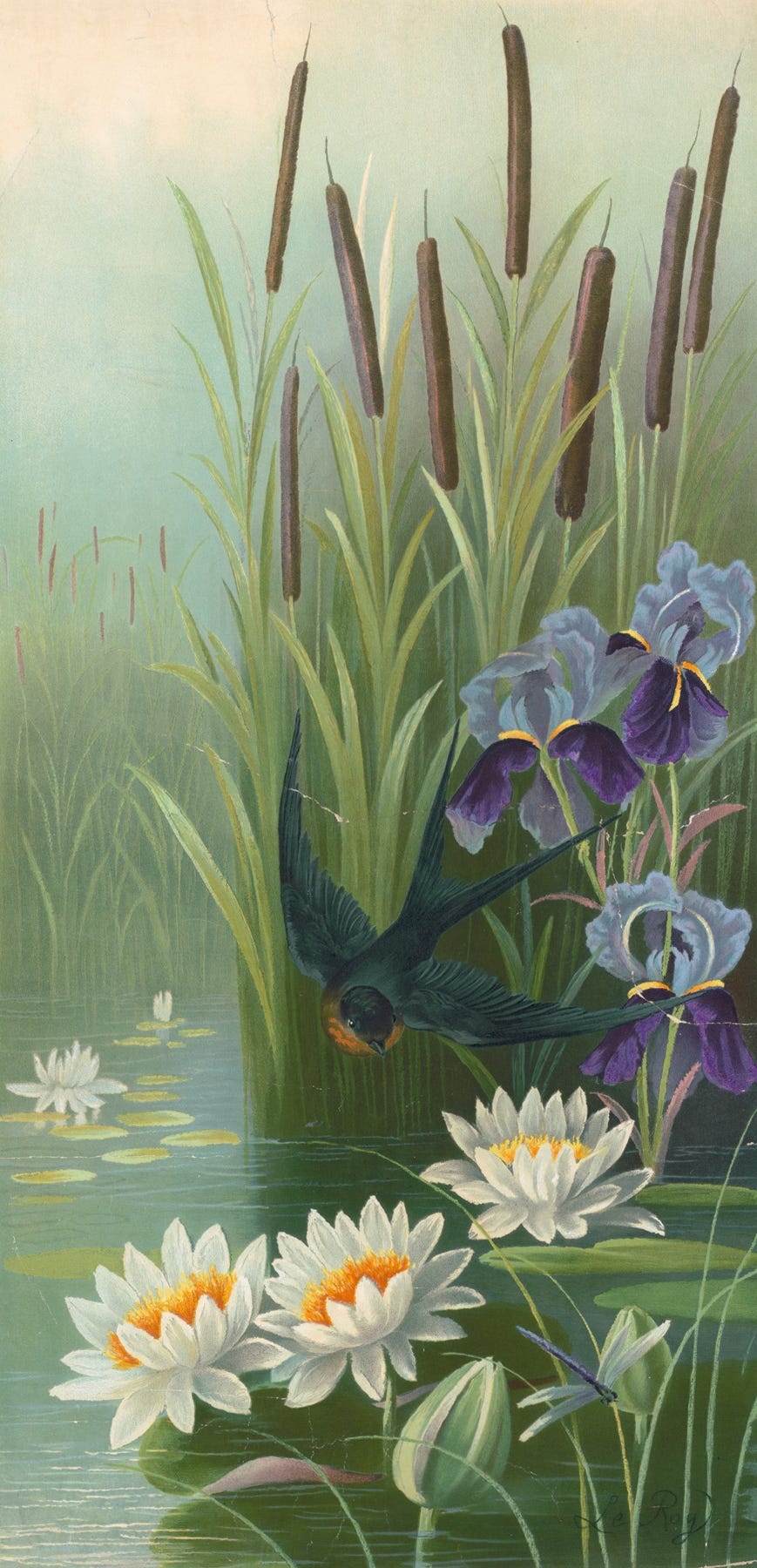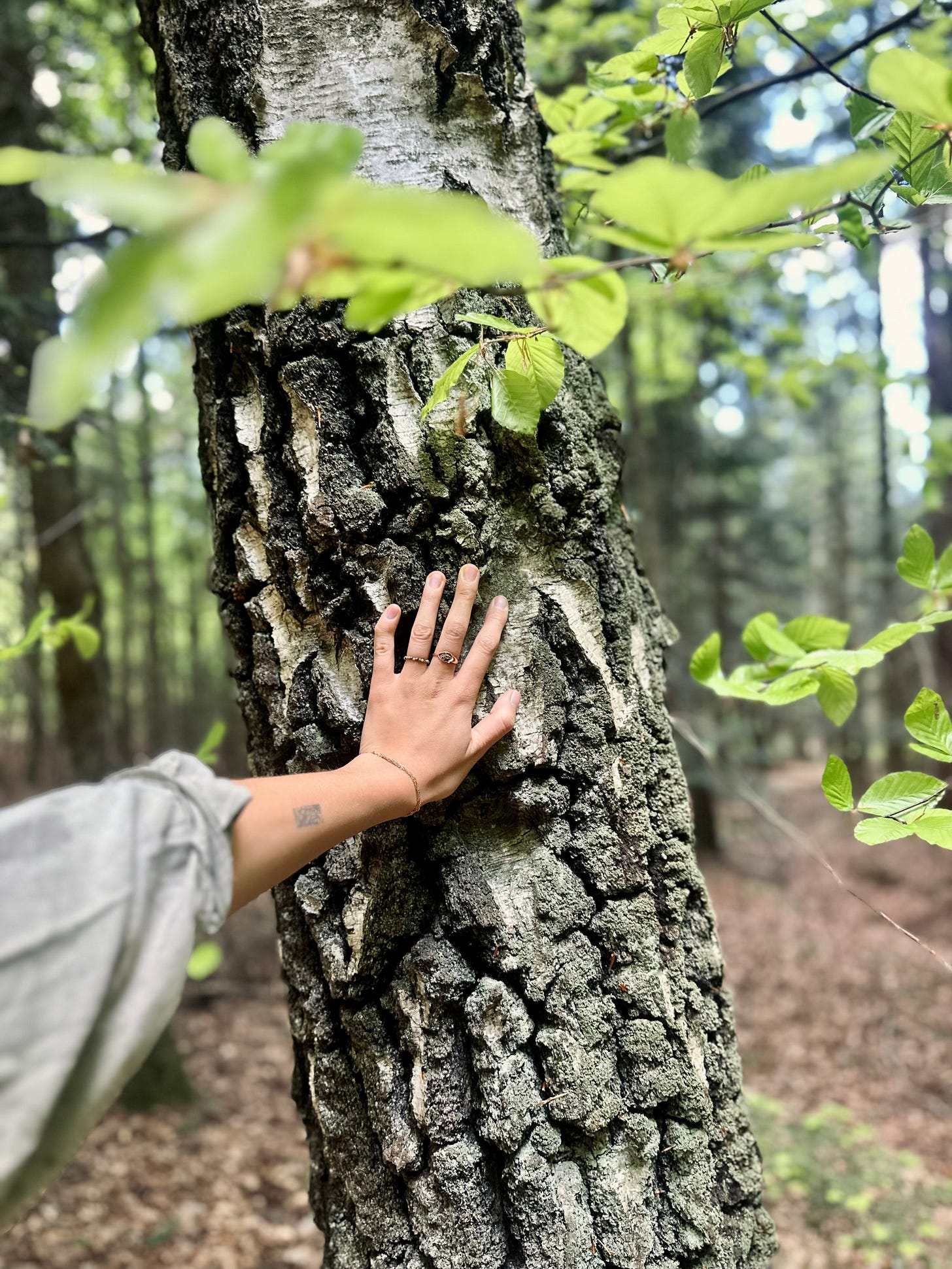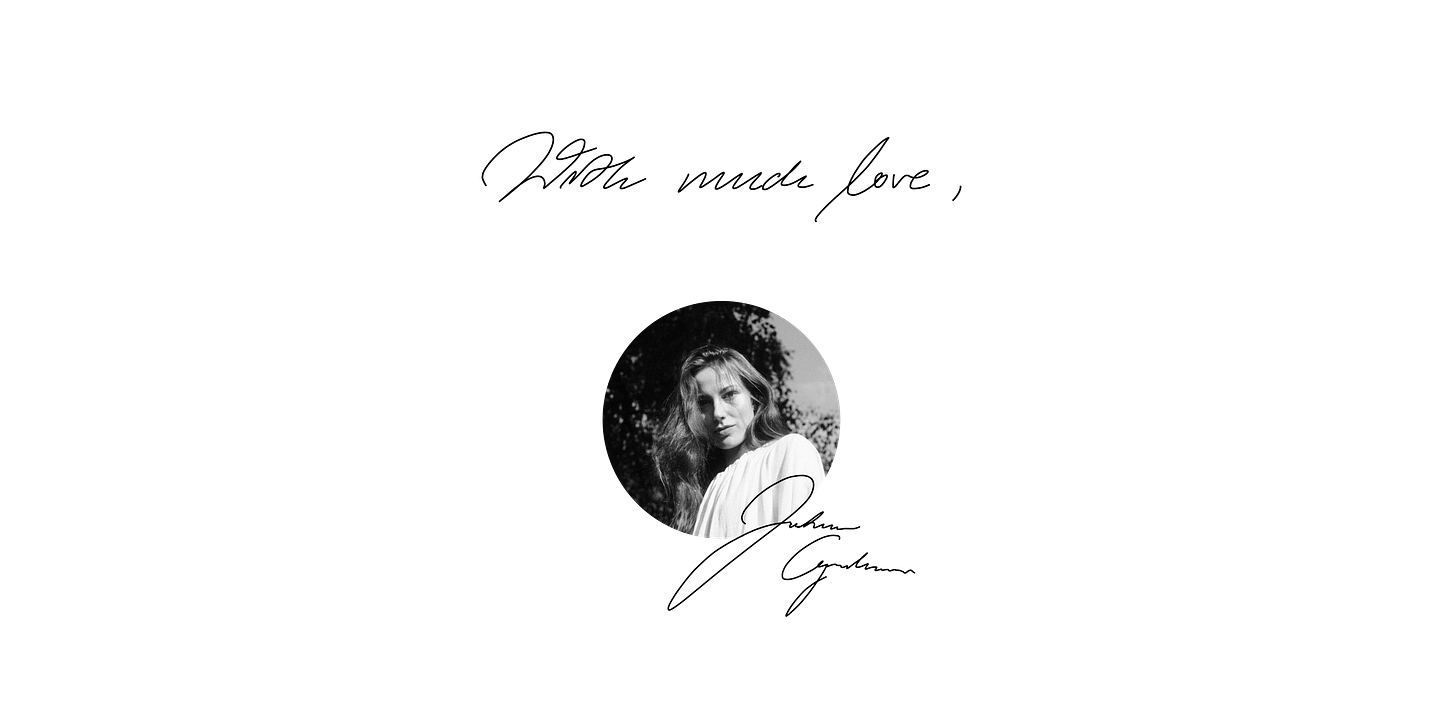“…To be in intimate relationship with life is to be intimately close with ourselves—which means directly tending to this mutually held flame.”
Hello dear reader,
How are you this week? What do you see in a corner of your heart?

“More and more the path is just simply being here and now, being with the way things are. There’s nowhere to go, nothing to do, nothing to become, nothing to get rid of”.
— Ajahn Sumedho
The task is simple in its nature, yet enormous in execution. To give oneself to stillness: to hold space for the wild unfurling of life’s expressions, to grant them all impartial recognition, and in doing so, to be softened, opened, and quietly undone. In the corner of my heart, a formidable face of fear peeks out, its teeth bare. It looks at me, I look back, and we acknowledge each other's presence.
Walking in the forest the other day, the swell of life suddenly became too great for me to hold within. I sat at the root of the nearest tree and burst out, tears rushing down my cheeks. After a moment, I noticed an acorn’s little hat in front of me. I picked it up, gently placed it on my head, then stood and walked away.
We all know the salty flavour of tears, and we also know they taste the same regardless of whether they fall in grief or joy. Regardless of their origin, they testify to the same release: that something within us has softened enough to flow. A human is water, 70%.
Like many of us, I was taught from a young age to compartmentalise my emotions, slowly hardening my heart. There are those commonly accepted and cherished, and those unwelcome, which I was told to hide in the thick wrapping of shame or suppress altogether. This compartmentalisation, as Francis Weller explains in his book “The Wild Edge of Sorrow”, narrows the parameter of life experiences we allow ourselves to fully inhabit.
Such restrictions not only limit our capacity to navigate sorrow, anger, and grief, but also our ability to experience joy, whimsy, creativity, and playfulness each in their fullness—and sometimes, perhaps, all at once—as I did, unexpectedly, at the tree’s root. As Weller wrote: “When we compress the terrain of grief, we also compress the territory of joy, and we end up living in a flatline culture, which is where we are right now.”
The careful curation of our inner landscapes gradually estranges us from our own lands, like industrialisation alienates animals from their habitats. To return home, we need courage to soften and to trust ourselves—and, importantly, an acorn hat.
“You don’t need to regard anything as unskilful,” Ajahn Sumedho reminds us, because, well, “it is what it is.”
He offers a softer approach than the rigid moralism many of us were shaped by: “If you trust your intuitive wisdom you will know how to respond to a situation rather than just reacting to it and creating some kind of ‘bad trait’ that you have to get rid of, and feel that ‘there is something wrong with me because I have this characteristic’. That just leads to complications. It becomes conceptual proliferation. You create a mountain out of a molehill.”
Responding to life rather than reacting to it means to be in direct, intimate contact with its truth. A relationship born in stillness.
I know. It may seem that the survival of both our physical and social body relies on movement. Offering oneself to stillness foretells silent, inevitable death.
To move is to keep becoming; searching new homes that could fit neatly our unorderly selves. There is messiness in us which scares us. Not knowing how to hold it, we give ourselves to movement. We hope it would disperse the fumes of our smouldering truth, the memory of wholeness which we can sense (annoyingly, in each moment) but are afraid to step into.
The smoke can signal us the truth, but it is not the truth itself. We must trace it to the source. There, we may find, time and again, that it comes from the flame of life itself. And life is what we are. Excessive movement only keeps us from remembering that. To be in intimate relationship with life, is to be intimately close with ourselves—which means directly tending to this mutually held flame.
I could, of course, write about movement—the achievements and highlights of daily efforts. There’s this week’s lilac harvest. It was plentiful. I’ve spread it in layers, stacked upon one another to dry; a Babel tower. The intention is to make tea and flower-infused body oil, which will marinate till summer before I can welcome it onto my skin.
This week, also, I saw a frog. She jumped away from the path I walked on, through a hole in a nearby fence. I have not seen many frogs in recent years, so I said hello to her and wished her well on her frog journeys.
Yet, if I can choose—and in writing this, I do—I endeavour to keep arriving close to the truth. And the truth accessible to me is that it is in stillness that life reveals itself most truthfully.
On my walk, I watch a tall, great tree. The same limp-branched one that welcomed me two weeks ago with my own branches hanging down helplessly also. I notice now its trunk is half-covered in moss.
One might say it is a fault—a weakness on the tree’s part—not to resist more firmly, not to make itself impermeable to moss. But the tree knows with the kind of knowing which, once glimpsed, begins to slowly saturate one’s whole being, that it grew tall and great precisely because it is porous.
Even the biggest stones I came across at the beach are not immune to change; they give into the natural process called corrosion. Their bodies are firm and strong and yet there’s a certain quality of softness about them. Without it, they wouldn’t be able to hold up under the pressure of environmental factors—they’d crack and fall apart like a brittle-dry clay vase under too much heat.
The process of corrosion or overgrowth change their form over time, but they don’t erase them. A grain of sand carries traces of the mountain, and the entire forest is nurtured by the decomposed wood.
Openness to life through stillness does not mean eradication from it. But it bears a different kind of death. Stillness may, indeed, bring an end to the process of becoming, but it is not the antithesis of being. In truth, it births us into our potential to finally participate in the world fully. A kind of honeyed melting into the fabric of things. A slow dissolving into a quality of being, stripped bare of all performances and illusions—the truth that has always been here, awaiting our return.
Even in stillness, life is throbbing vigorously. Sitting now in the field, it is quiet and still, and yet the wheat and the grass all around me and underneath my bare feet, are growing. Just like still soil allows the grass roots to reach deeper and wider, a still life leads us more deeply into ourselves.
A bird cuts through the blue, still sky. There is life in stillness. One enables the other.
I worried that by dwelling at a slow pace, I would stay behind. I gave up my old ways of trying to keep up, pressuring myself into performative action and for a long time, it felt as if the world had forgotten me.
When friends and close ones kept moving, flying, building homes, getting married, I still sat under the tree, I still walked barefoot through the grassy paths, not knowing at all where I am headed exactly, but trying to trust my ability to keep arriving with each step.
I worried that if I did not show some proof of my daily efforts, they will soon be proved by someone else to be invalid. If only I could earn more from my writing, I thought, or travel more, or move into some impressive place, or achieve some spiritual breakthrough that would leave no doubt I was up to something—then all would finally be well. My existence would be validated, and therefore saved from annihilation by quiet erasure.
But that would mean shutting myself off from the moss, the rain, the wind, and the sun. Abandoning my own lands, I would stop tending to life’s flame too; like a clay vase under too much heat, I would crack. Movement leads to death, and stillness does too. The choice is not whether to die—that is a promise given by life—but what we are being birthed into through this death.
I finally understood that my life could not be any different than it is now. Moving more—at the pace I once believed would validate my existence—would also mean turning wide swathes of my attention outward. But I am already dying the silent death. I cannot move myself out of it. To keep directing my attention inward, I must keep offering myself to stillness.
Even if shedding the layers of identity often feels like one’s skin being torn off piece by piece, steadily and with little breaks—it is still a sweet submersion into the honey of unbecoming, of welcoming back all parts of oneself.
That’s what life asks of us—to eat it whole, like a fire-eater—just where we stand, just where our mouth is. To burn into clarity. Inward implosion.
If you find warmth, comfort, inspiration, joy, motivation, or anything else of value in these letters and would like to show your support, please consider becoming a deeply valued patron by upgrading to a monthly or yearly subscription. This will also give you access to the full archive. If you have a financial restriction, please don’t hesitate to contact me.
Before you go:
When did you last allow yourself to be held by stillness—with no need to explain or justify your being?













I am new to your writing and incredibly thankful to have found it. You weave words, stories, and meaning so beautifully together. Your ability to gently cultivate but so accurately identify the most nuanced and specific of feelings— just wow!
This spoke to me. There is a quiet strength in the way you describe stillness, not as an escape but as a deep engagement with life. I felt comforted by your reminder that we do not have to prove our worth through movement or productivity. The part about shedding layers and staying close to the flame of being stayed with me. Your writing makes space for honesty and for all the messy, tender parts of being human. Thank you for sharing this. It helped me slow down and feel more at home in myself.